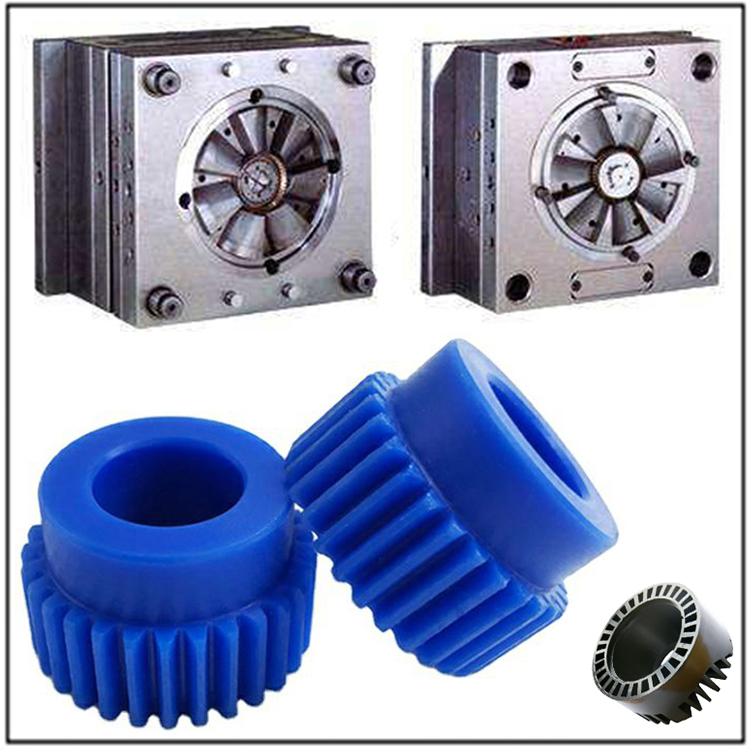
How to Choose The Correct Demolding System For Your Plastic Mold
In the production of plastic products, plastic molds are the core to ensure product quality and production efficiency, and the demolding system, as a key component of plastic molds, directly affects the molding effect and mold life of the product. Choosing a suitable demolding system can not only improve production efficiency, but also reduce scrap rates and maintenance costs. This article will provide a detailed analysis on how to choose the appropriate demolding system for your plastic mold, helping you achieve efficient production.
1.Understand the function of the demolding system
The demolding system is a device used in plastic molds to smoothly remove molded plastic products from the mold. Whether it is a simple ejector pin system or a complex inclined ejector or hydraulic demolding mechanism, the design of the demolding system directly affects the surface quality of the product, the durability of the mold, and the production cycle. Choosing a suitable demolding system requires comprehensive consideration of the structure, product shape, and material characteristics of the plastic mold.
2. Factors to consider when choosing a demolding system
2-1.Product shape and structural complexity
Different shapes of plastic products have varying requirements for demolding systems. For example, simple flat products may only require basic ejector pins for demolding, while complex deep cavity or inverted structures may require slanted ejector pins or sliders to assist in demolding. When designing plastic molds, it is necessary to choose a suitable demolding method based on the geometric shape of the product to ensure smooth demolding without damaging the surface.
2-2.Material characteristics
There are various types of materials used in plastic mold processing, such as ABS, PP, PC, etc. The shrinkage rate and mold adhesion of different materials after molding are different. For example, materials with higher viscosity may require stronger demolding force, while hard materials need to avoid deformation caused by excessive compression. Therefore, when selecting a demolding system, it is necessary to fully analyze the material properties to ensure a smooth and efficient demolding process.
2-3.Mold accuracy and tolerance
High precision plastic molds have higher requirements for demolding systems. For example, molds with tolerances within ± 0.01mm need to ensure precise demolding actions to avoid product defects caused by improper demolding. The position, quantity, and synchronization of the movement of the ejector pin need to be accurately calculated and debugged.
2-4. Production efficiency and cost
For large-scale production of plastic molds, the speed and stability of the demolding system are particularly important. Automated hydraulic or pneumatic demolding systems can significantly improve production efficiency, but at a higher cost; The simple ejector pin system has low cost and is suitable for small-scale production. Enterprises need to weigh production demand and budget when making choices.
3.Common types and applicable scenarios of demolding systems
3-1.Top needle demolding: The most common demolding method, suitable for plastic molds with simple structures, low cost, easy maintenance, but not suitable for complex inverted structures.
3-2.Slanted top/slider demolding: Suitable for plastic products with side walls or inverted buckles, it can effectively handle complex geometric shapes and is commonly used in plastic molds for automotive parts, home appliance casings, etc.
3-3.Hydraulic/Pneumatic Demolding: Suitable for large or high-precision plastic molds, with strong demolding force and smooth movement, widely used in high-end product manufacturing.
3-4.Combination demolding: Combining multiple demolding methods, suitable for plastic molds with ultra complex structures, such as medical devices or precision electronic components.
4.How to optimize the design of demolding system
·Simulation analysis: Using CAE software to simulate the demolding process of plastic molds, predict possible sticking or deformation problems, and optimize the design in advance.
·Surface treatment: Add release agent or special coating on the surface of the mold cavity to reduce the risk of mold sticking and improve the smoothness of demolding.
·Precision machining: Using high-precision CNC and EDM machining technology to ensure the tolerance and action accuracy of the demolding system, reducing the number of mold trials.
·Regular maintenance: Establish a comprehensive mold maintenance plan, regularly inspect the wear of components such as ejector pins and sliders, and extend the life of plastic molds.
Choosing a suitable demolding system is a key step in plastic mold design, which requires comprehensive consideration of factors such as product shape, material characteristics, production efficiency, and cost. Through scientific analysis, precise processing, and continuous optimization, you can equip plastic molds with efficient and reliable demolding systems, thereby improving product quality and market competitiveness.











